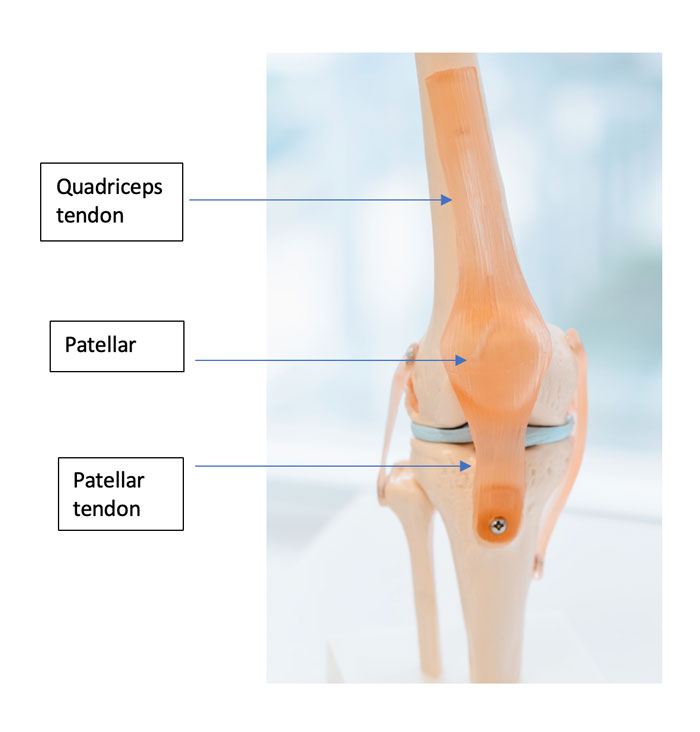
What is the quadriceps tendon?
The quadriceps tendon connects the top of your kneecap to your thigh muscles and forms part of the ‘extensor mechanism’. It works with the thigh muscles (quadriceps), kneecap and patellar tendon to straighten the knee. If the quadriceps tendon is torn you will not be able to straighten your knee.
What is a quadriceps tendon tear?
Small tears can occur due to ‘wear and tear’, a bit like a rope fraying but still being strong enough to work.
Larger tears mean all the fibres in the quadriceps tendon have torn and it no longer connects to the top of the kneecap. You might notice a gap above your kneecap, pain and swelling, it also means you won’t be able to straighten your knee making it difficult to walk.
How can I tear my quadriceps tendon?
Tears can be caused by a fall or stumble where the thigh muscle suddenly pulls on the quadriceps tendon and it tears. Less commonly they can be caused by a direct blow or cut above the kneecap.
Tendinitis or some diseases such as Diabetes, kidney failure and rheumatoid arthritis, or injections of steroids around the tendon can weaken it making it more prone to tearing.
How is a quadriceps tendon tear diagnosed?
If you describe not being able to straighten your leg after an injury and there is swelling or a gap above your kneecap, you may have torn your quadriceps tendon.
To confirm the diagnosis an ultrasound scan or MRI scan will show the tear and whether it is a complete tear all the way through the tendon or only part of the way through.
How common is a quadriceps tendon tear?


How is a quadriceps tendon tear treated?
If the tear is small and not all the way through the tendon then resting the leg in a splint for up to 3 months can help the tendon to heal.
If the tear is completely all the way through the tendon it won’t heal on its own and an operation is needed to stitch it together. The tendon is reattached to the top of the kneecap by stitching it together and passing stitches through tunnels in the kneecap. Ideally the operation should be within 2-3 weeks of the injury.
Sometimes the repair of the tendon is reinforced using synthetic (artificial) tape or wire to splint the repair and help it to heal.
After surgery you will be placed in a knee brace to limit how far you can bend the knee which may be from 6 weeks to 2 months to allow the repair to heal. Once the knee brace is removed you start physiotherapy to help to build up your muscle strength and knee movement. The aim is to return to 85-90% of your previous muscle strength.
What are the complications?
As well as a scar, risk of infection and risk of clots in the veins, the risks specific to this operation are weakness and stiffness as well as a risk of re-rupturing the tendon.
- 33-50% of patients have weakness
- 50% of patients are unable to return to their previous sports or activity
- Some patients complain of pain around the kneecap or operation scar
Don’t let a quadriceps tendon tear limit your life. Prof. Caroline Hing is here to provide the best care and treatment options for your recovery. Whether it’s a minor tear or a complete rupture, our state-of-the-art diagnostic tools will accurately assess your condition.

